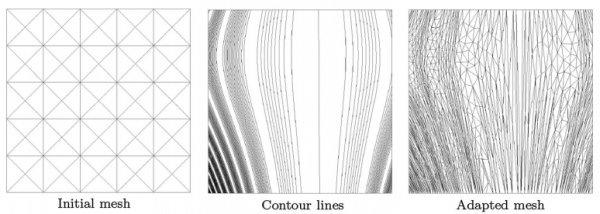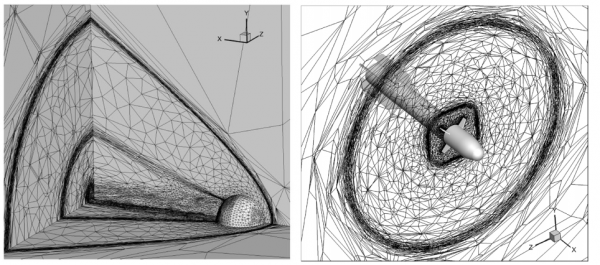Mesh Adaptation
Mesh adaptation is related to maximizing the resolution of a given solution field at a minimal computational cost.

Figure 1: Mesh adaptation of an analytical solution field [Animation].
Several numerical algorithms used in Engineering and applied sciences for simulating are performed using discrete meshes, such as the Finite Element Method (FEM) or the Finite Volume Method (FVM). For performing reliable and high-fidelity evaluations using such algorithms, mesh adaptation can be included on those simulations. Sometimes, mesh adaptation is mandatory for sucessfully capturing discontinuities or complex local effects on the solution field.

Figure 2: Adaptative simulation of a supersonic flow past a sphere [Animation] and a missile [Animation].
Mesh adaptation relies on controlling the interpolation error of a discretization and its implementation is performed using computational discrete geometry foundations. A starting meshing can be updated by local modifications or the whole mesh tessellation can regenerated.

Figure 3: Adapted mesh [Animation].

